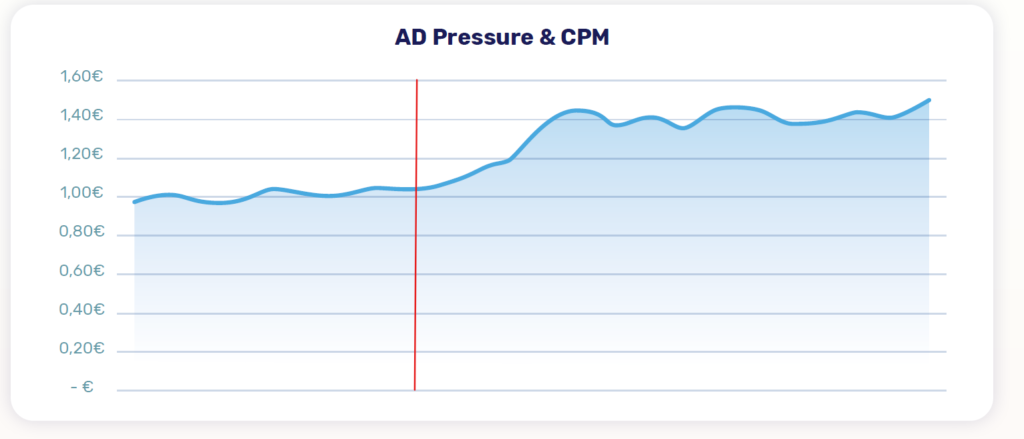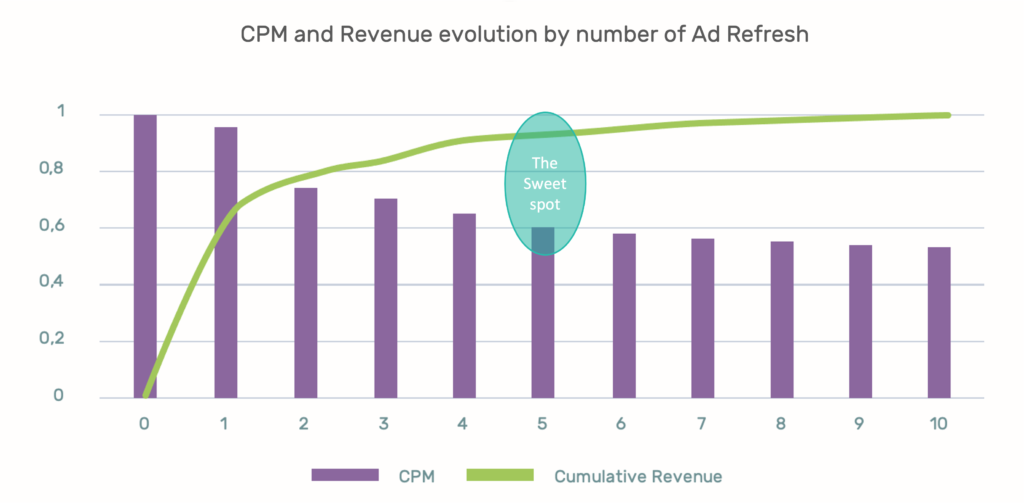Many publishers have noticed that when implementing ad refresh, their CPM tends to decrease. In reality, it is not directly linked to the implementation of ad refresh, but it is one of their common side effects. After several refreshes on the same ad unit and on the same user, the value of the opportunity will start decreasing as a result of less demand. Some advertisers have caps and simply lose interest in the impression after a certain number of refreshes. The more users are exposed to ads, the stronger their ad fatigue will be. seeing the CPM of the refreshed ads decrease after the user has been exposed to more of them is perfectly normal as he will be less sensitive to it. Adding ad refresh to your website is very similar to adding ad placements on it in terms of how the users, advertisers, and CPM will react. Both these options increase the ad pressure and will slowly decrease the overall value of impression opportunities over time.
At Pubstack, we recommend two best practices to prevent or at least mitigate user fatigue in order to keep the CPM under control when implementing ad refresh.
First, publishers need to be able to adjust the refresh frequency in order to decrease ad pressure. This will lead to a higher CPM, and publishers should be aware of exactly what impact these changes will have on their CPM. The graph below shows the evolution of a placement’s CPM, on which the refresh frequency has been adjusted. It was switched from a twenty-second frequency to a thirty seconds frequency.

The effect of this was an immediate increase of around 40% of the CPM. However, this uplift came at a cost. As the refreshes were less frequent, there were much fewer impressions leading to a 50% revenue drop in this case. Publishers need to find the sweet spot between the target CPM and optimal revenue, and since these metrics are specific to one ad placement, it is important for them to be monitoring closely all their placements to keep control of each of their CPMs.
It is important for publishers to be able to pinpoint exactly when their CPM on a given placement starts decreasing i.e., after how many refreshed impressions will bidders start lowering their bids. With this data, it is possible to find the sweet spot between revenue and CPM.

On this graph, you can see how the CPM is decreasing with user fatigue, compared to the cumulative revenue for ad refresh. Let’s imagine that this publisher does not want his CPM to fall below $0.60, with the given data, we can see the best decision to meet the publisher’s needs would be to disable ad refresh after 5 refreshes in this placement. Furthermore, the data shows us that the publisher will lose 10% of his revenue as soon as the refresh capping will be implemented. Giving access to this type of granular data is one of our priorities at Pubstack, as we believe that it allows publishers to make the best decisions regarding their setup.
The comprehension of user fatigue and its impact on the CPM is mandatory for publishers trying to find the perfect balance between their CPM and optimal revenue. Ad refresh allows them to spotlight this impact, and the data collected from these refreshes offers an excellent framework to adjust the balance in the best possible way. High CPMs and optimal revenue can indeed go hand in hand as long as publishers have the right tools and frameworks to analyze their data.
Now that you know all about how to manage your Ad Refresh, make sure to read our dedicated whitepaper : How to increase revenue with Ad Refresh without affecting the inventory ?
Finally, I’ve you’ve read us this far it probably means that you’re looking for more control on your wrapper, with or without the technical capacities to do so. We met many of our current customers while they were facing the same challenge after internalising their Header Bidding management. So if you’d like to get a glimpse into what it looks like switching from a managed to an in-house Header Bidding wrapper management, read all about Quarter Media’s business case regarding their switch to Pubstack.